There’s something about the car scene, that attracts us enthusiasts to the makes and models commonly modified. It almost turns into a competition of who can do that model of car better, make the most power, and have the coolest wheels. Unfortunately though, because we aspire for greatness, we often replicate. Replicating is by no means a bad thing, as there’s nothing wrong with the combination of modifications in the first place. We’ve been seeing a huge amount of late-model Evolutions modified in a similar manner lately, and we aren’t complaining, as they’re all serious machines. How, though, do you stand out, or rather how do you truly make an impact with a chassis so commonly modified in a certain way that it will, in years to come, become a stamp in our automotive history book.
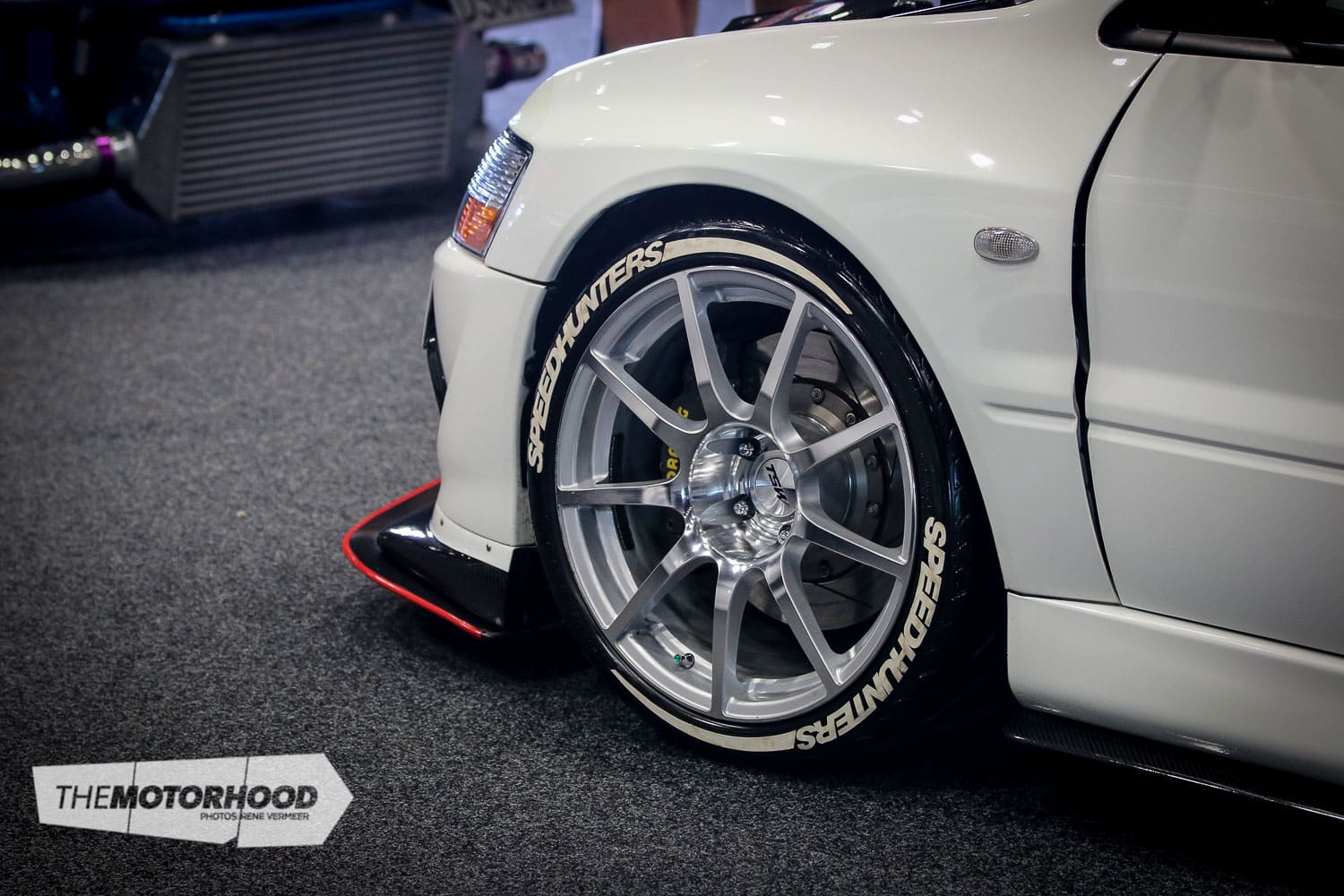
Shalvin Sharma has managed to do such a thing with his street- and time attack–appearing Mitsubishi Evo VIII MR. The best part about it is that it didn’t take much. In fact, it was as simple as choosing a different wheel combo to the rest, and the largest Vortex wing that he could find.
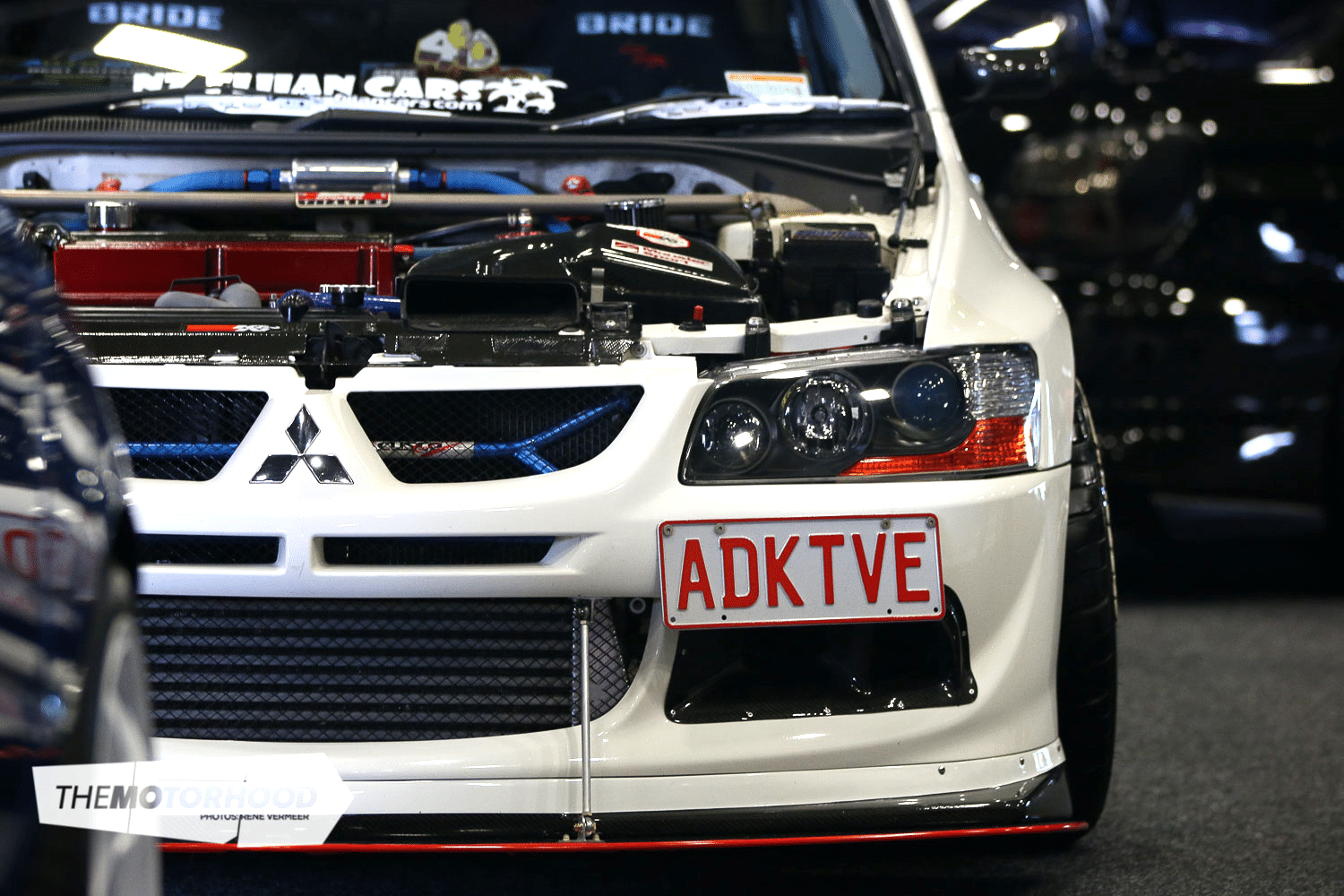
During the recent Waikato Fest held February 13, Shalvin’s Evo stood out amongst a hall of show cars. Why? Well, it is white, but also it has the stance of a charging rhinoceros. It’s low, it’s wide, and it’s ready to charge. It’s fair to say that I shot from afar, until the black-eyed beast let me near.
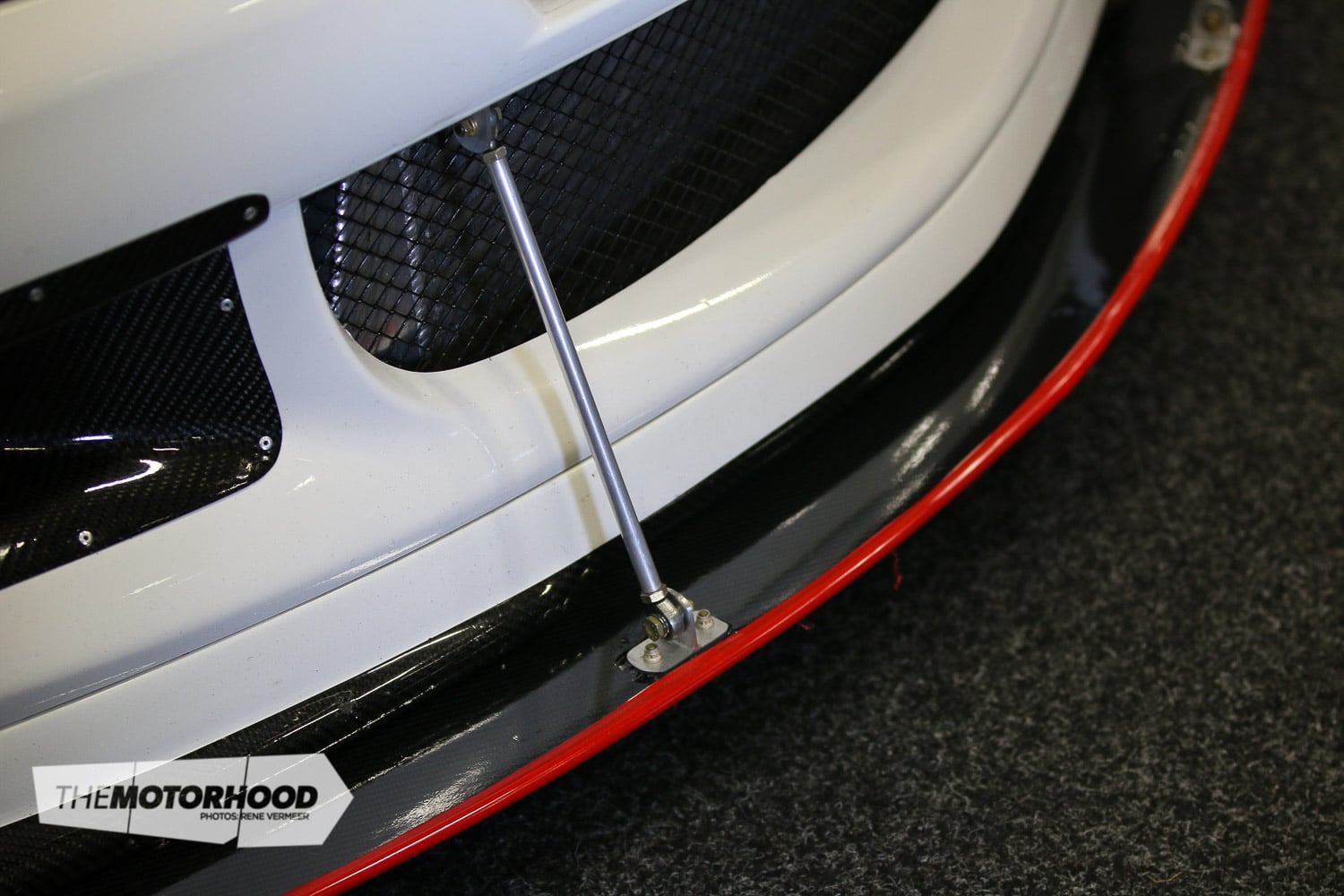
You see, this isn’t your usual Mitsubishi Evo VIII build with a high-flowed turbocharger and a re-flash — no, this 4G63 has the works to ensure it’s a fear-mongering hunk of rising-sun tin.
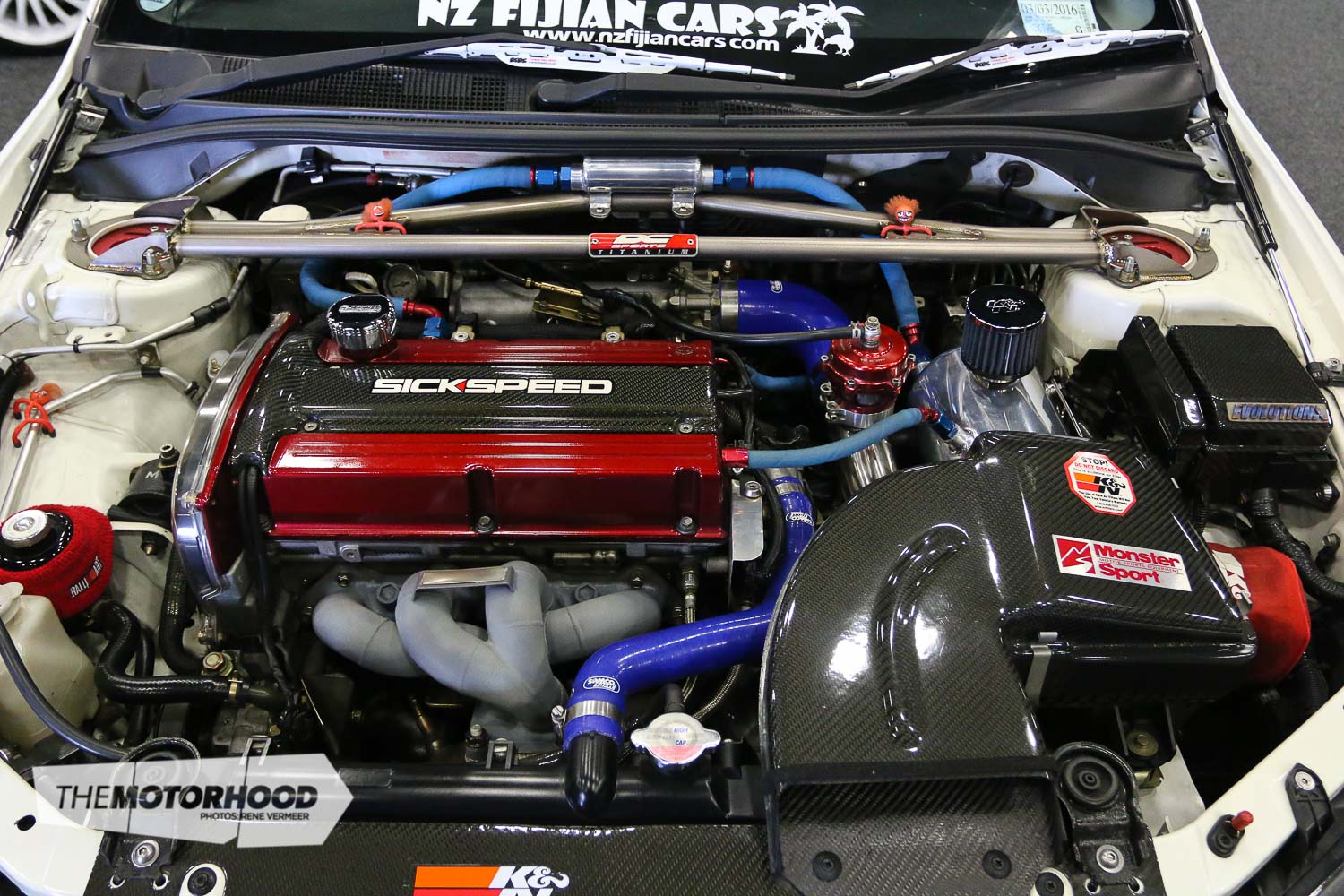
The 4G63 was not going to stay a two-litre for very long under Shalvin’s ownership, as the torque and response he was after could only come from a Red Bull can–sized amount more cubic inches. Much like a can of Red Bull, the 4G63 provides plenty more energy now, thanks to the extra 300cc of capacity, enough to warrant installing a fairly large huffer to an Aspec titanium turbo manifold.
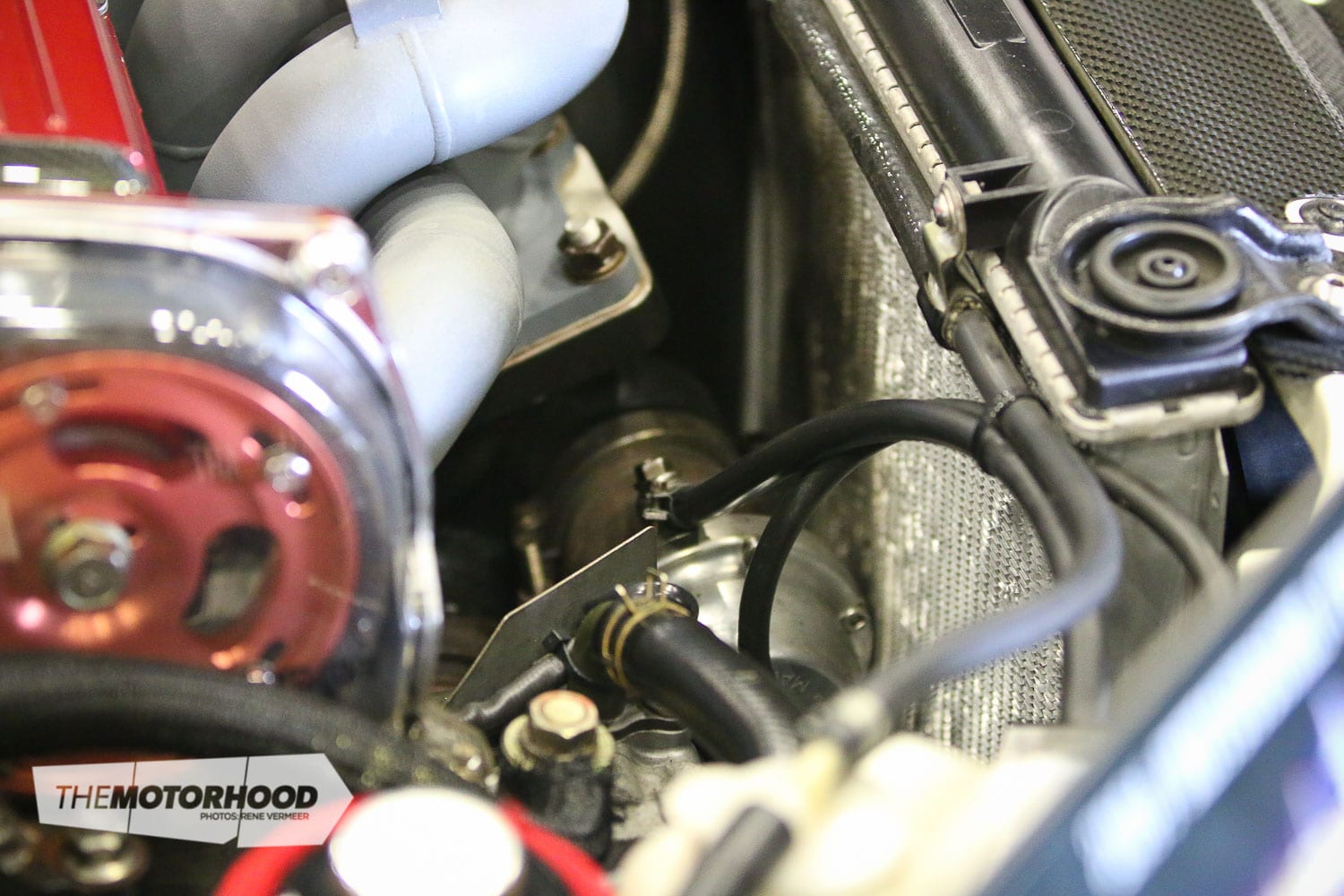
Without effort, the stroked 4G63 spools the Garrett GT3582, and the rushing of air coming from the four-inch intake pipe fights to the death for top honours against the battle cry coming from the 44mm TiAL external wastegate. To handle the boost forced through the intake runners, the engine has been forged with CP forged pistons and Eagle rods. The foundations don’t stop there though; ARP head studs and bolts, a Cosworth crank scraper, and a nitrided 100mm crank were thrown into the mix.
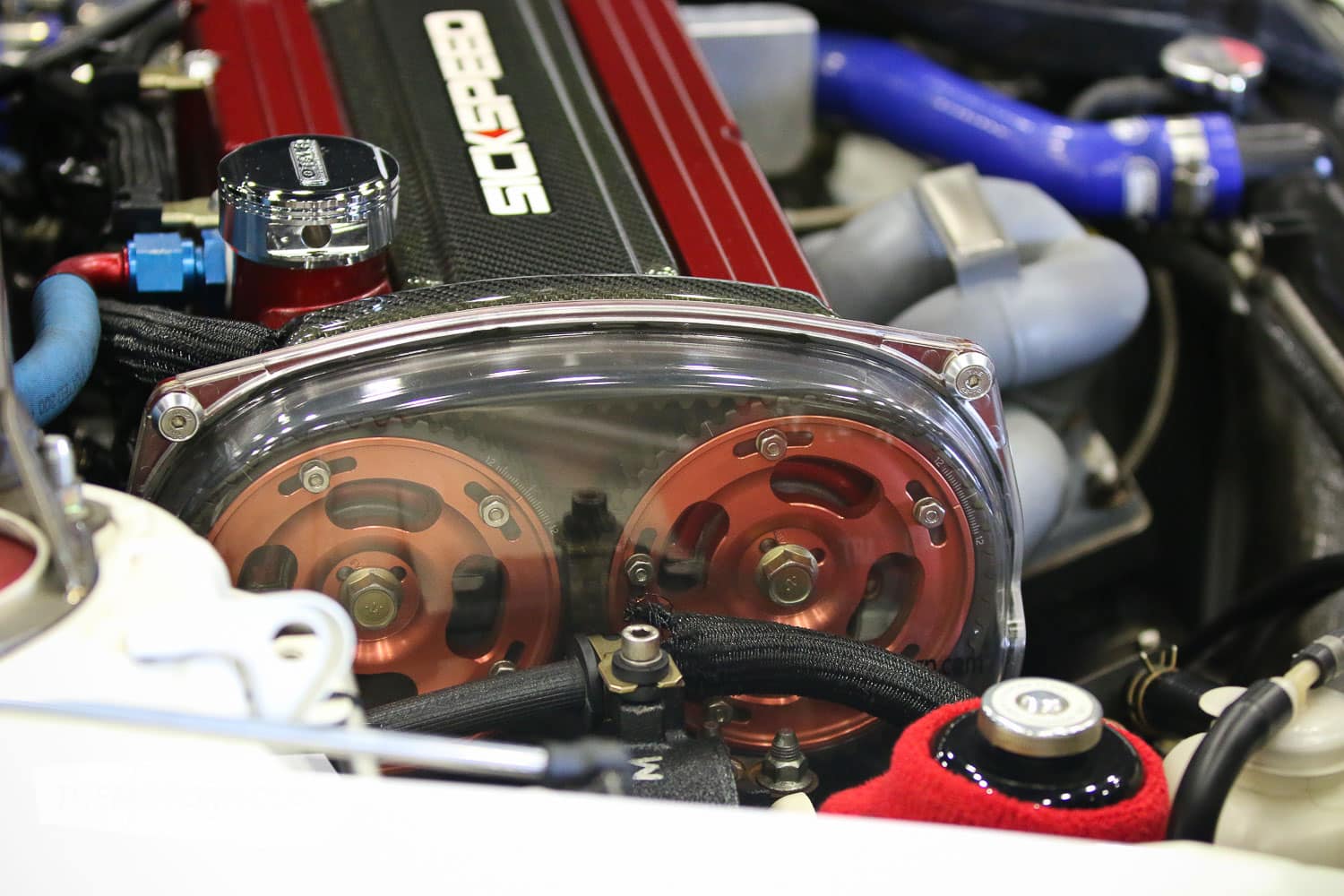
The head got a serious talking to also, with a port and polish, 1mm oversized Manley valves and springs with bronze valve guides, and a Buschur ported throttle body. Kelford Cams supplied the 272-degree cams, which should give an indication as to the seriousness of the build. Incoming charged air is cooled by a very thick front-mount intercooler, which is boost-regulated by a 50mm TiAL Q blow-off valve.
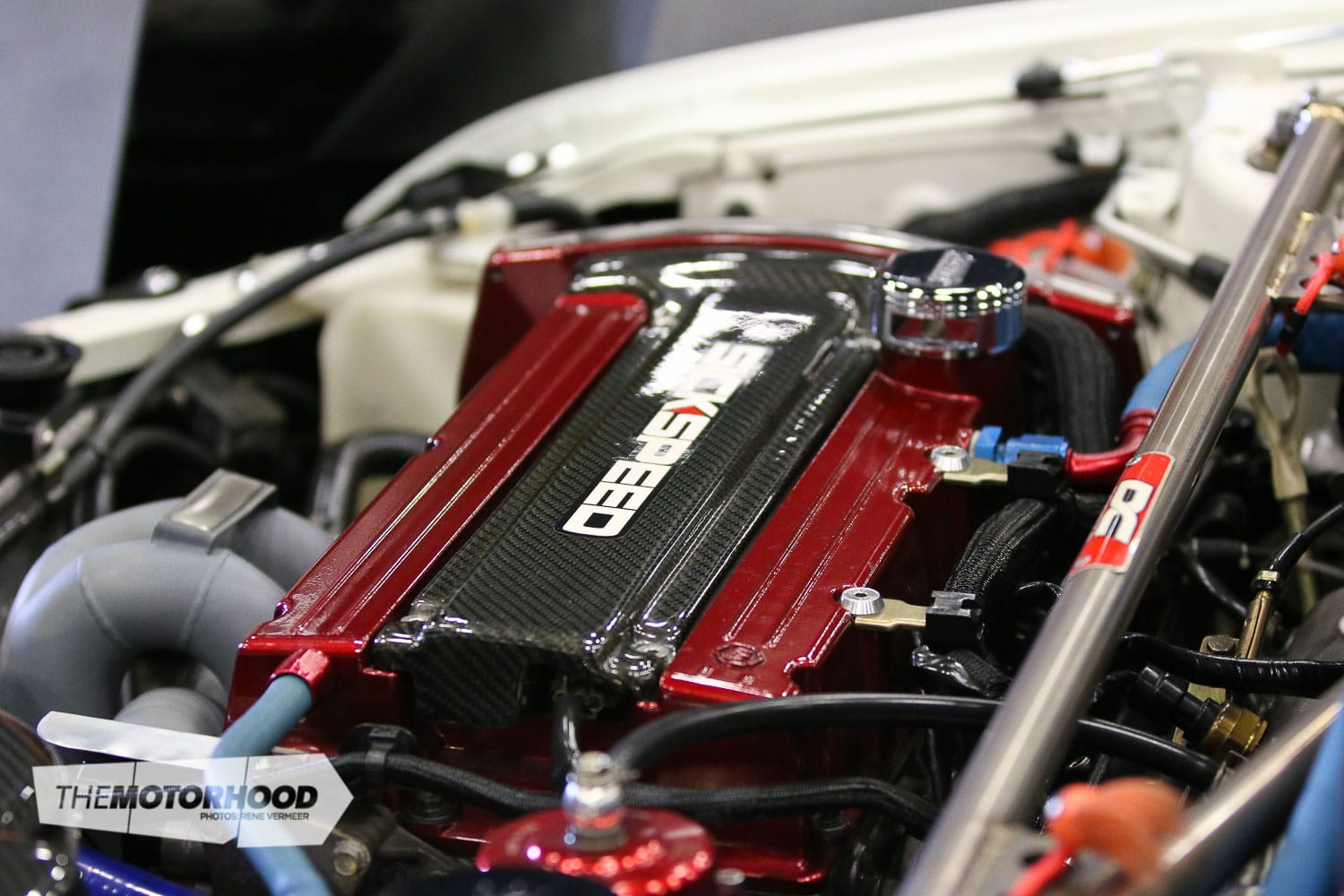
By now you’re probably thinking that the Evo probably has a decent fuel system to keep up with the incoming frozen fury, and you’d be correct. Four 1000cc Injector Dynamics injectors fuel the fire, forced by twin Buscher 500hp fuel pumps, and an AEM fuel-pressure regulator.
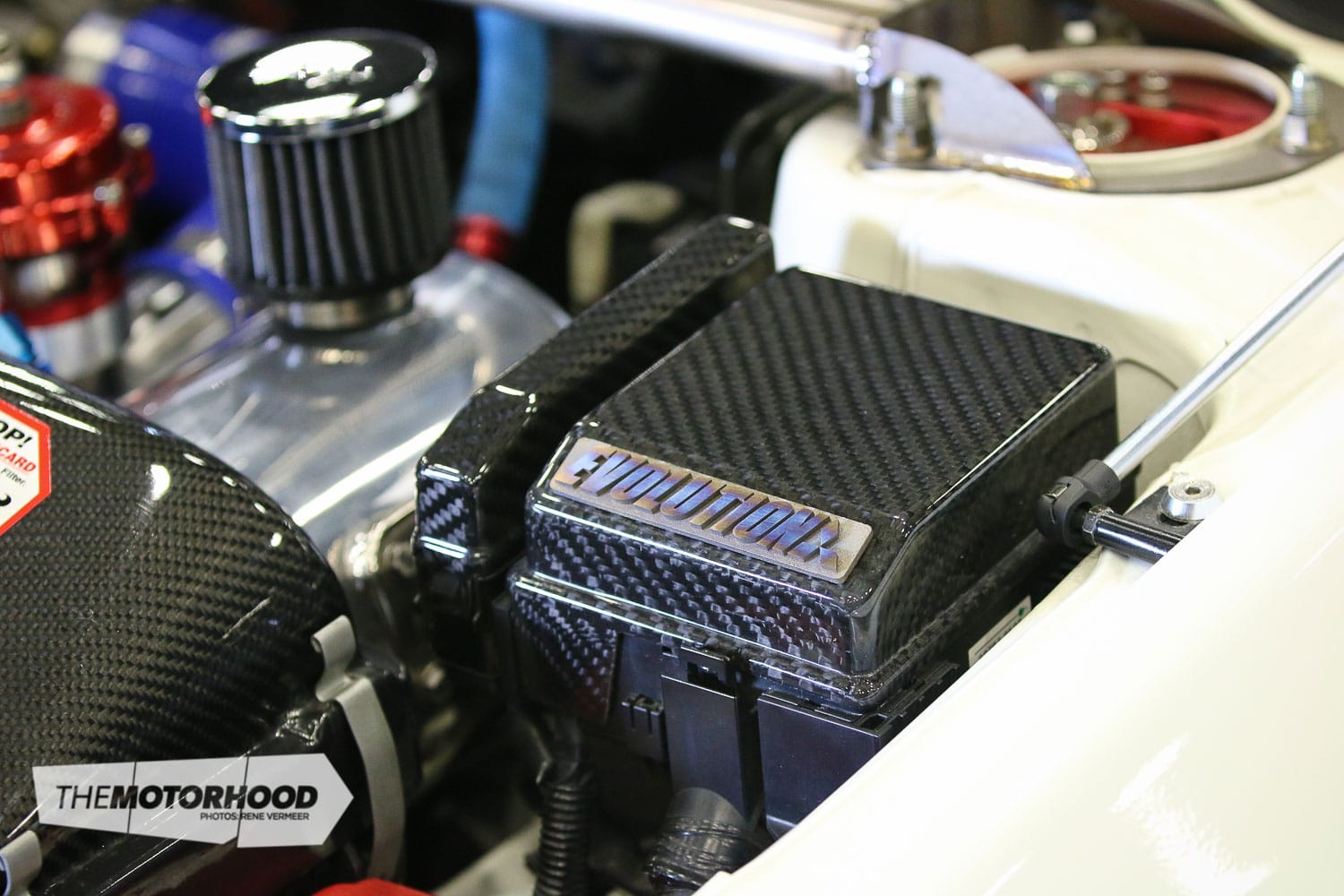
Now, I know pump fuel is going out of fashion with most Evo owners nowadays, but Shalvin prefers the mix as it’s readily available around town, and the 4G63 has been built to such a calibre that on pump fuel, decent numbers were certain. On a lowly 21psi, the 4G63 was kind enough to produce 398kW at the wheels for whatever onslaught it was required for, controlled by a MoTec M800 ECU.
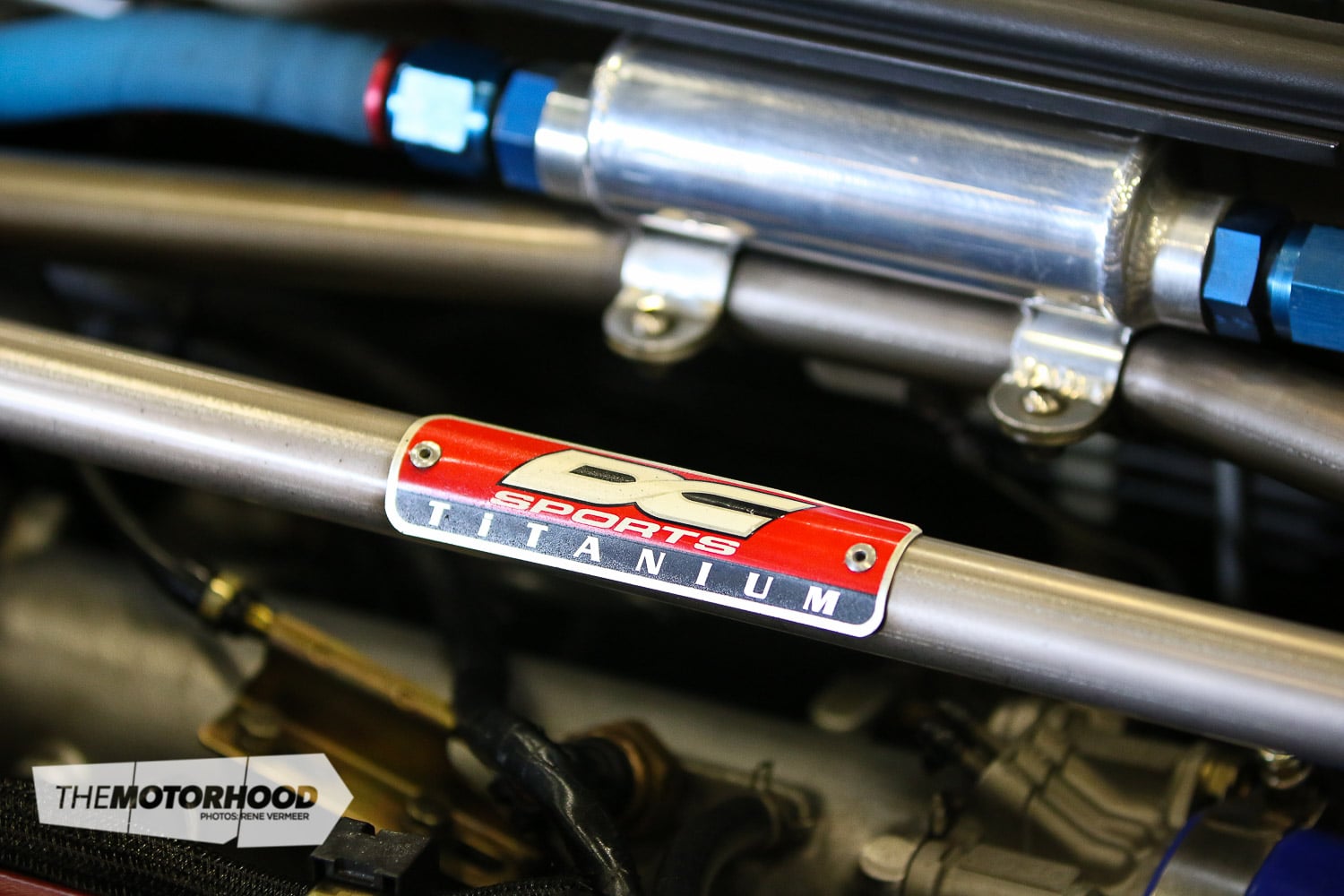
There’s no point in having power without control and foundation. Mitsubishi Evo owners are asking a lot more from their cars these days, more so thanks to the likes of Superlap battles and time attack taking off the world over. The 4G63 is backed by the factory six-speed manual gearbox, but has an OS Giken twin-plate clutch to ensure that the torque doesn’t have its way.
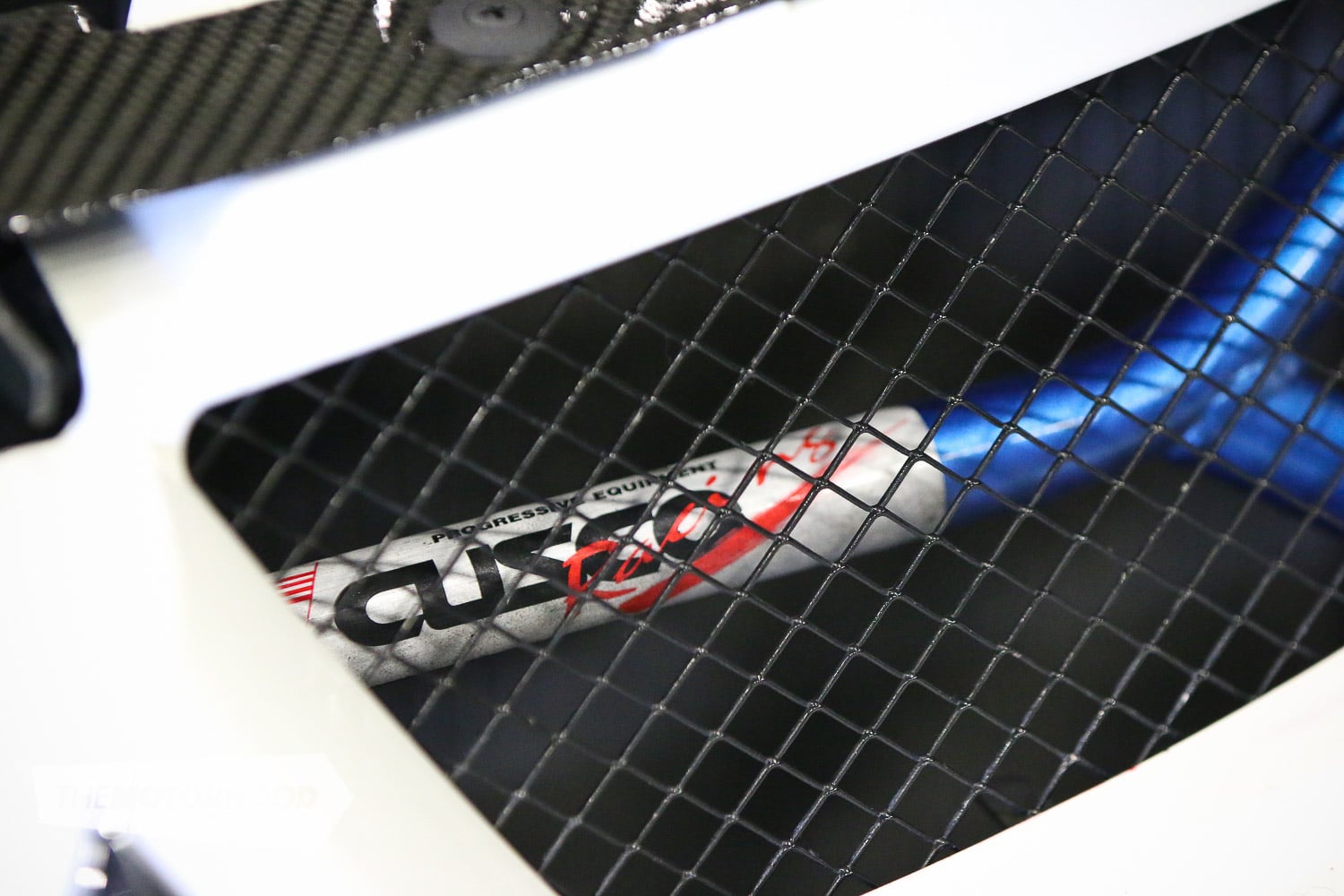
With the rotating assembly, clog case, and bolt-ons sorted, Shalvin knew that in order to harness the new-found power, he’d have to have some fairly special suspension componentry. Neotech coilovers, Whiteline sway bars, Whiteline bushes throughout, and Ralliart engine mounts were all installed to ensure that the Evo was firmly planted.
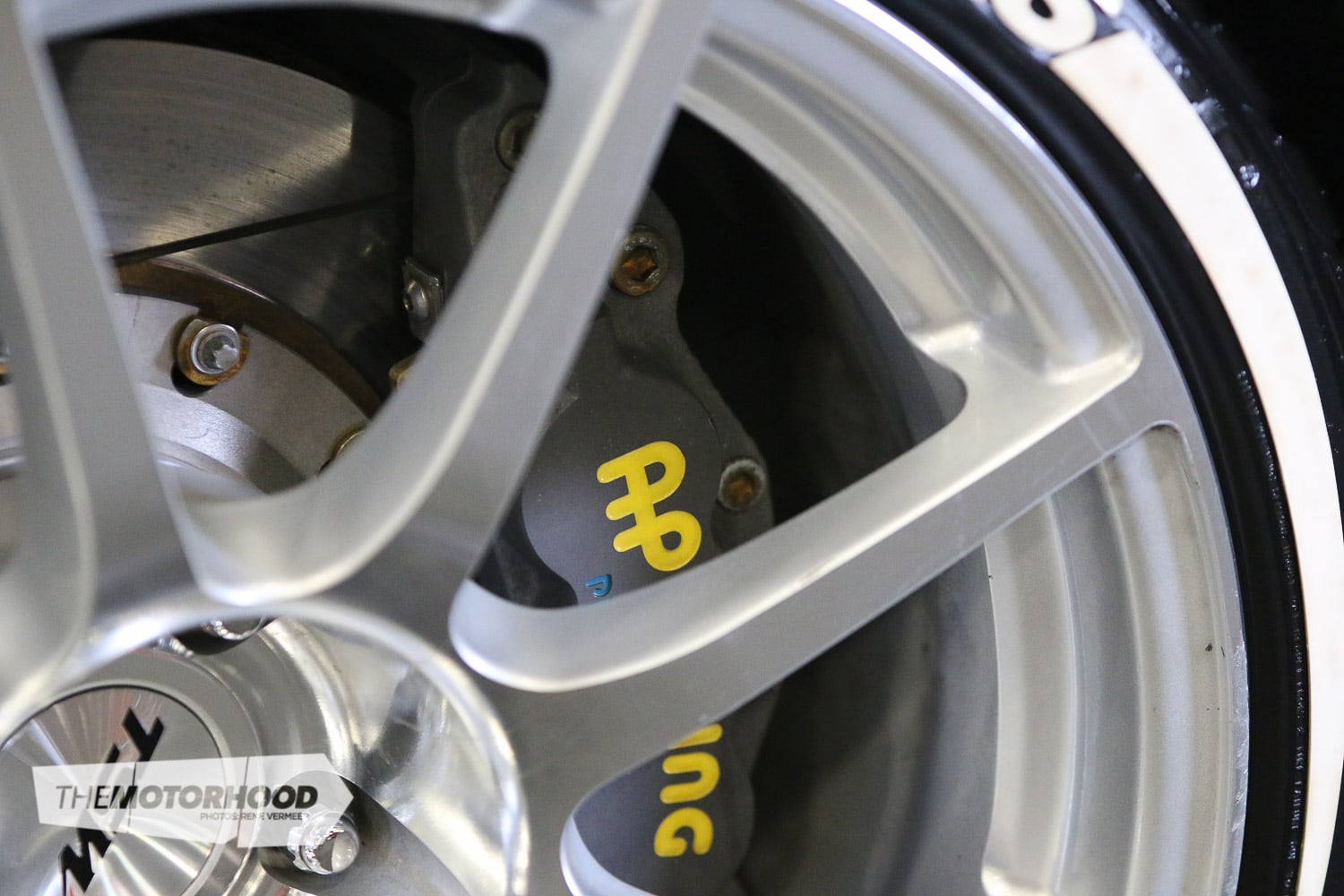
If an attack is required to halt suddenly, the Evo will do thanks to the ginormous six-piston front AP Racing calipers with Pagid yellow brake pads. Down the back, the twin-piston Brembos also feature Pagid yellow pads for an even feel.
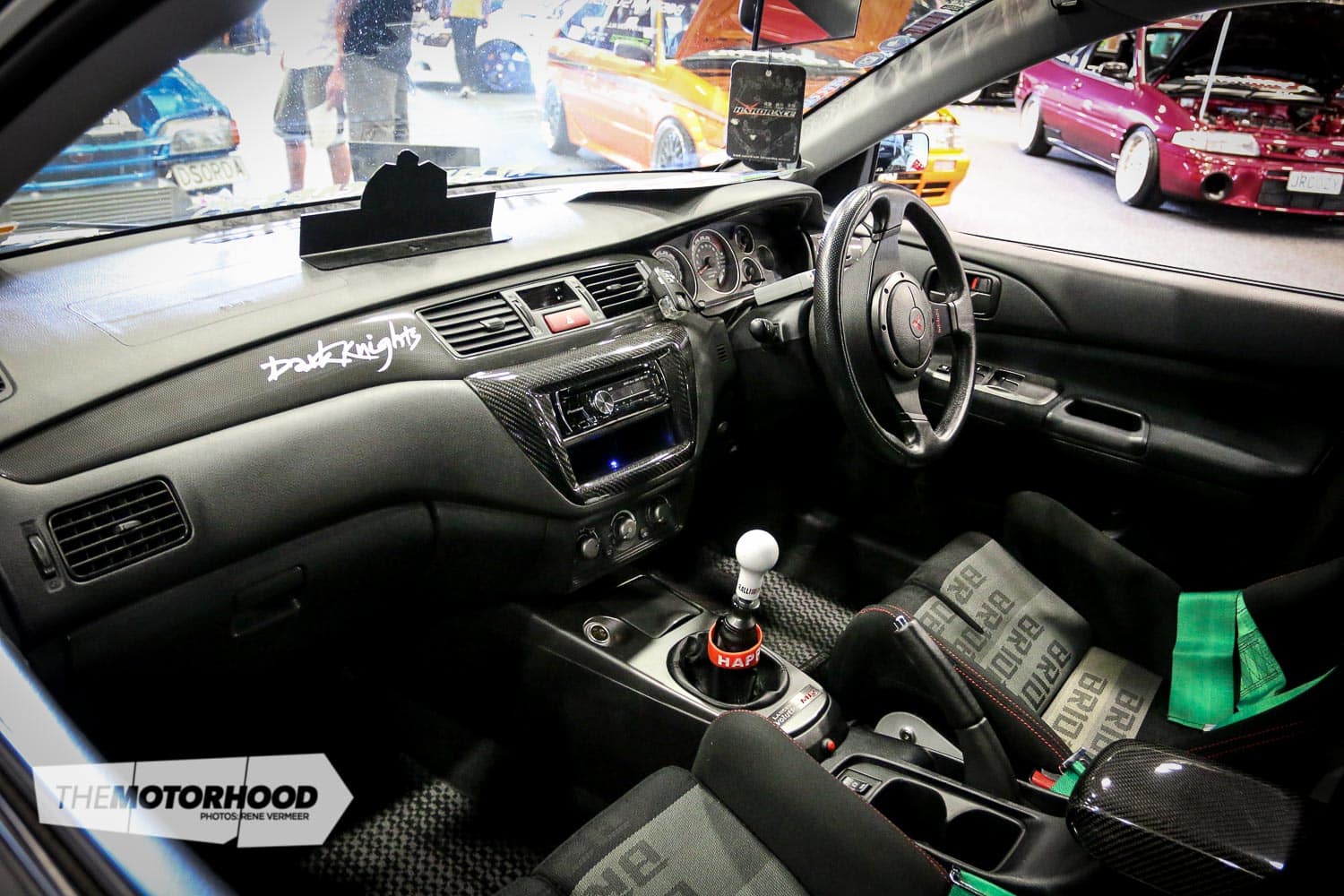
The cabin is a very nice place to reside, as most late model Evos are, however Shalvin has added in a pair of Bride seats for a bit of extra holding power.
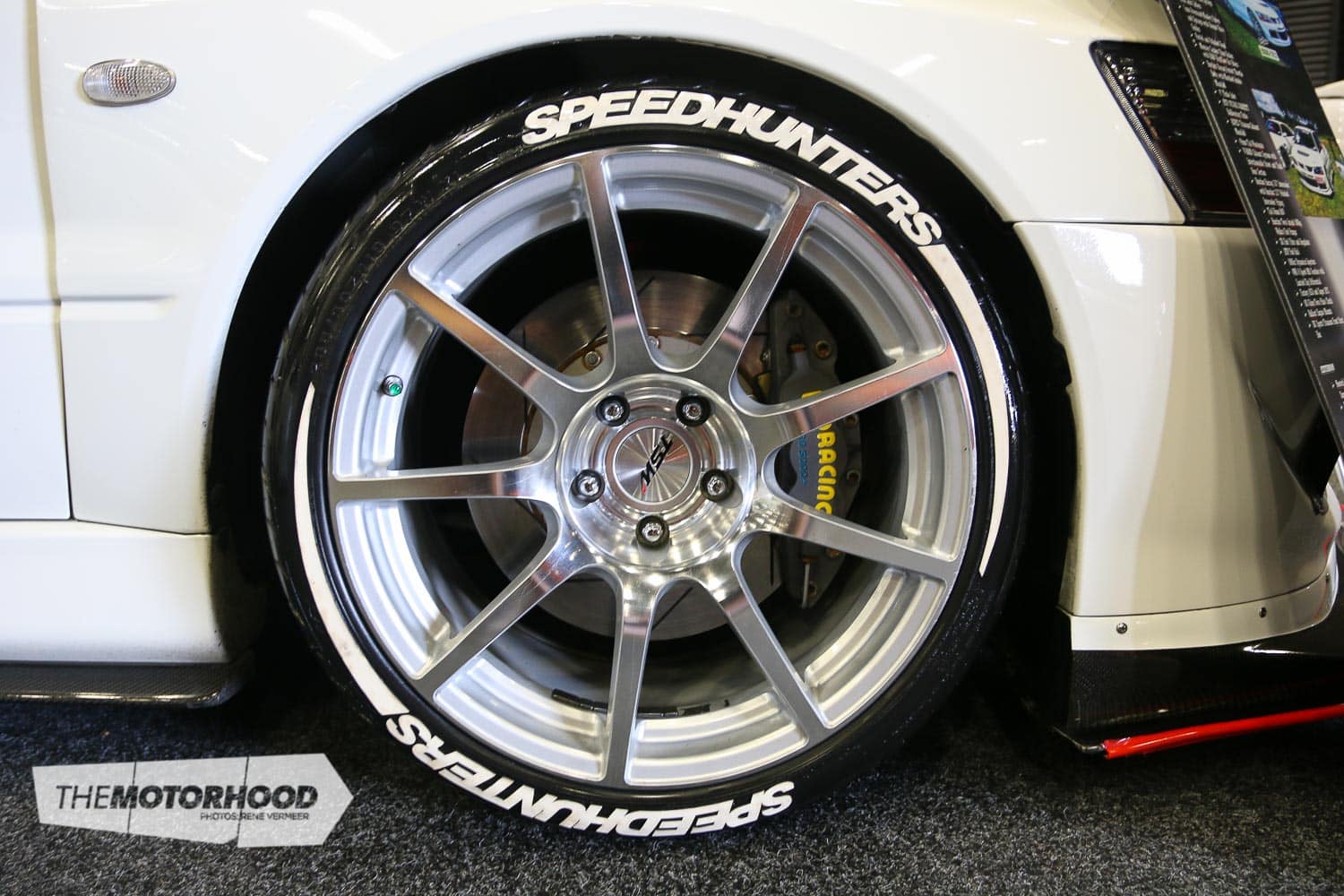
It’s not often we write about a wheel produced by TSW; maybe back in 2005, but not these days. How awesome are these wheels though? The almost-billet looks incredible, especially in the 18×10.5-inch measurement these come in. The TSWs are wrapped in 285/30R18 Toyo R888 semi-slick tyres, that surprisingly fit thanks to the pumped and rolled guards.

We’re hoping to catch this machine out at a local circuit one day, so we can witness first-hand the intensity it portrays here in the show. Until then though, enjoy the photos, and well done Shalvin on producing something that stands out in a sea of late-model Evos.
View fullsize
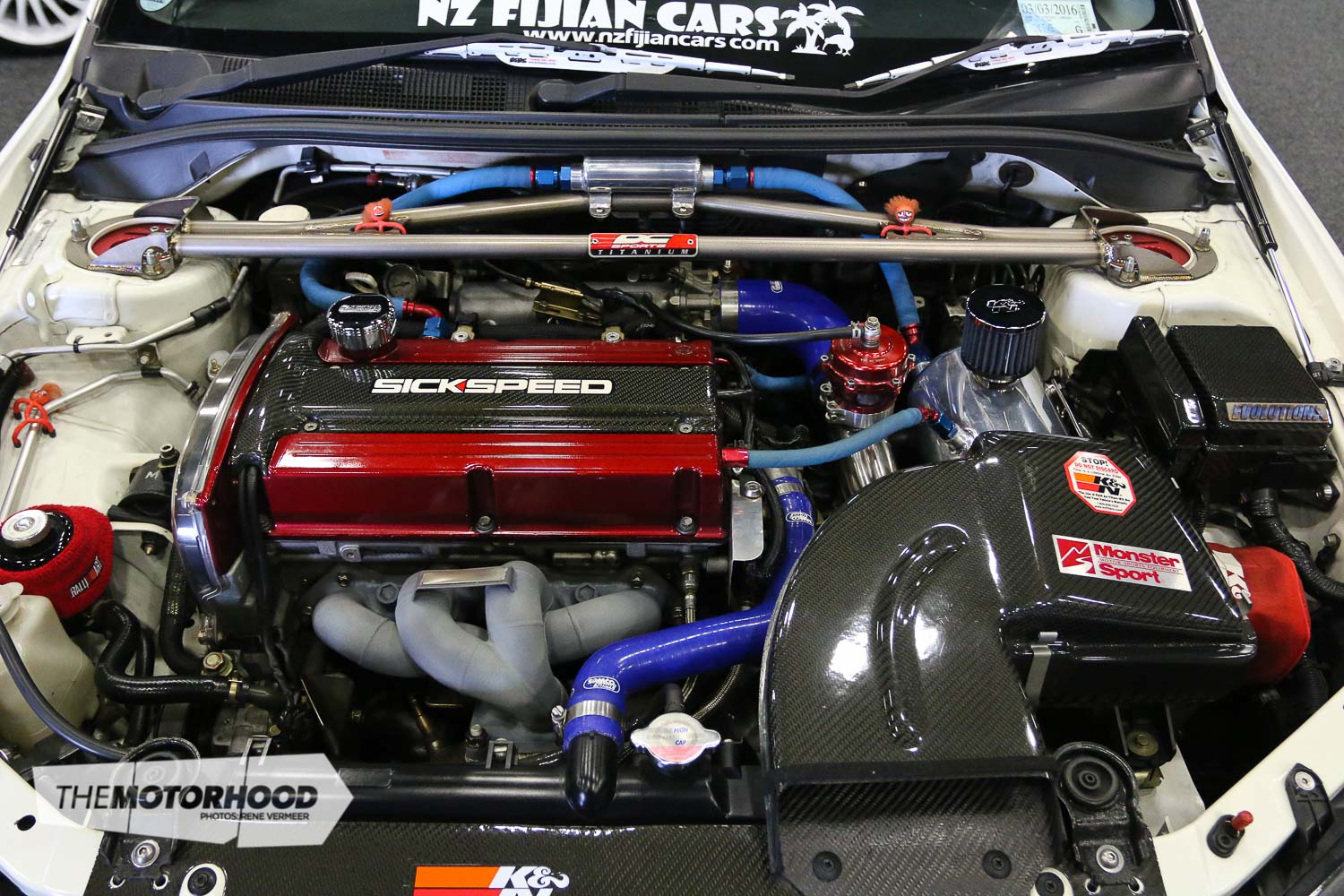
View fullsize

View fullsize

View fullsize

View fullsize

View fullsize

View fullsize

View fullsize

View fullsize

View fullsize

View fullsize

View fullsize

View fullsize

View fullsize

View fullsize

View fullsize

View fullsize

View fullsize

View fullsize

View fullsize

View fullsize
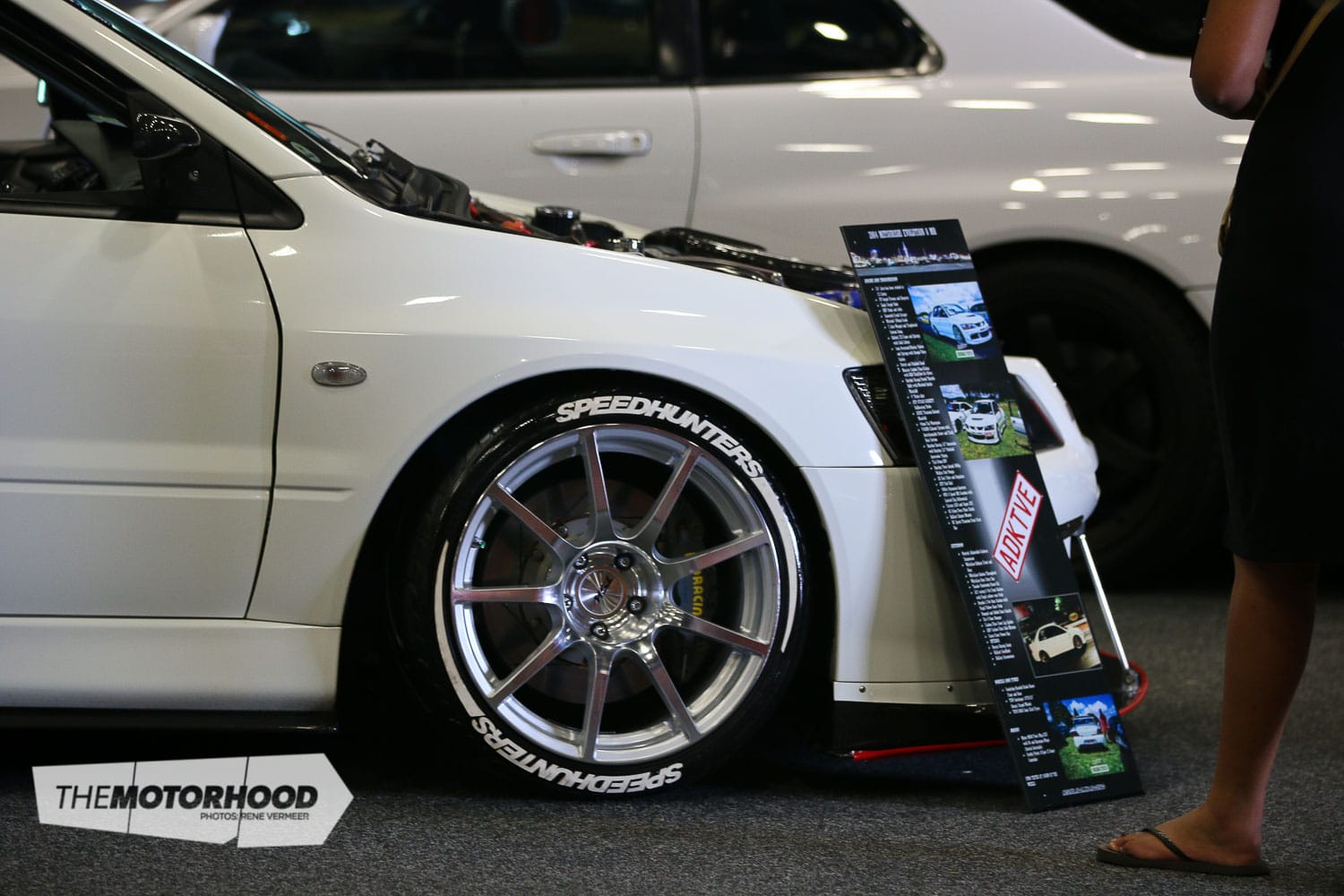
View fullsize

View fullsize

View fullsize

View fullsize

View fullsize

View fullsize

View fullsize

View fullsize
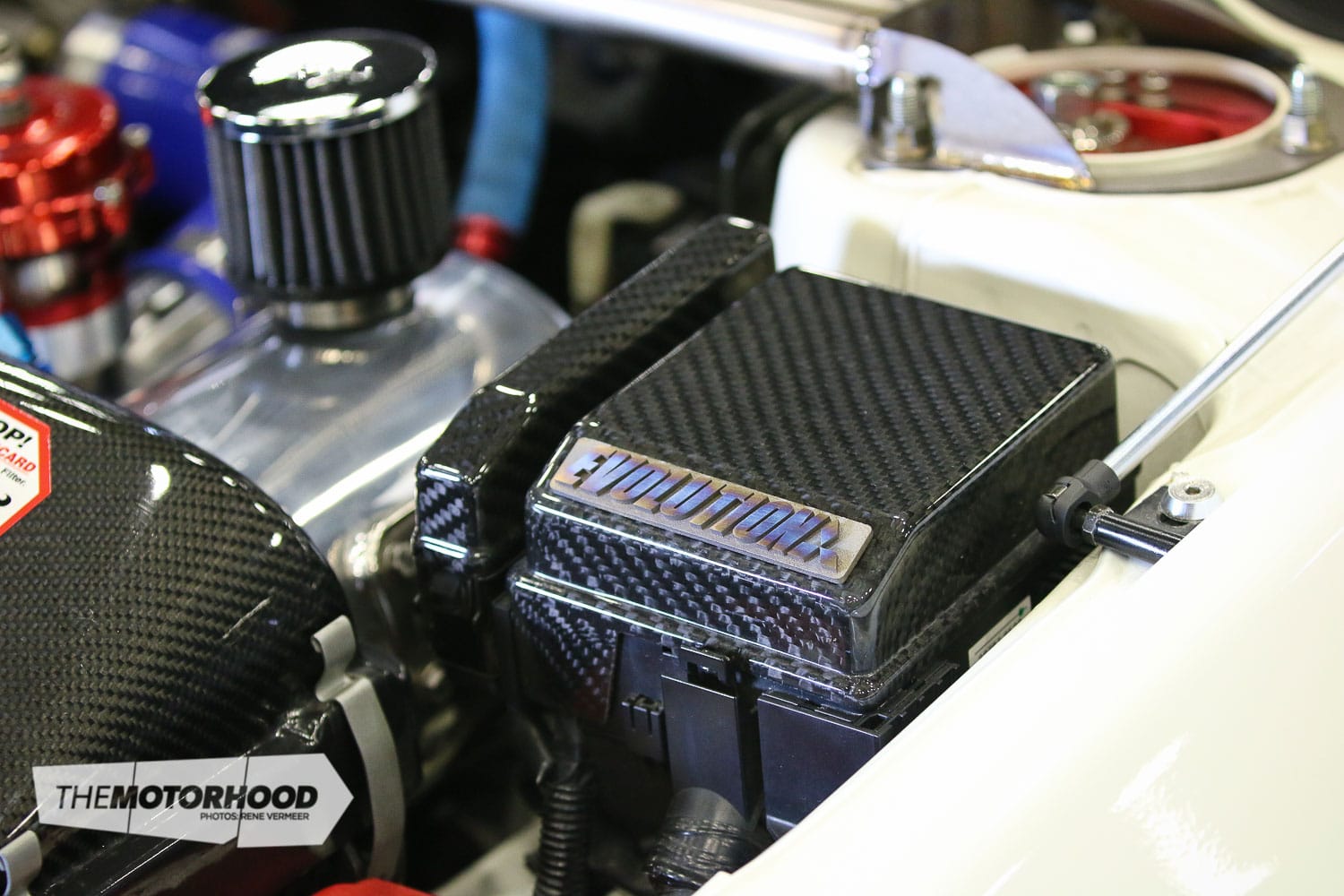
View fullsize





